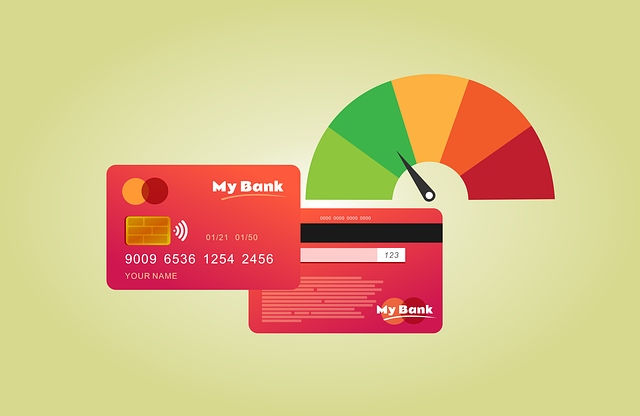What is the Employee Retention Tax Credit?
The Employee Retention Tax Credit (ERTC), also called an Employee Retention Credit (ERC), was a tax-savings incentive for businesses to retain employees during the pandemic. It helped companies reduce their payroll costs. The refundable payroll tax credit expired on October 31, 2021, but qualifying businesses can retroactively file to receive the credit for tax years 2020 and 2021.
Employee retention tax credits were first enacted under the CARES Act. The Consolidated Appropriations Act and the American Rescue Plan Act later amended the program.
Eligible employers include those that received state or federal government orders for a full or partial shutdown or experienced a decline in gross receipts by 50% or more compared to the same timeframe in 2019. Companies withhold payroll taxes to claim the employer retention tax credit.
Under the provision, eligible businesses could claim a payroll tax refund for qualified wages paid during the pandemic. The provision underwent several changes and adjustments since its initial implementation under the CARES Act. New legislation changed eligibility allowing businesses that received PPP loans to also qualify in certain situations
In 2020, the credit was equal to 50% of up to $10,000 in wages paid per employee for all qualifying quarters between March 13, 2020. A qualifying quarter is when there was a decline in gross receipts by 50% or greater during the same quarter in 2019. Total credits could not exceed $10,000 per employee annually.
The credit equaled 70% of up to $10,000 in qualifying wages per quarter in the first three quarters of 2021. Essentially, employers could claim up to $7,000 per employee per quarter, which equals a total of $21,000 per employee annually.
The IRS applied the credit to the employer portion of the employee’s social security tax, which was fully refundable. The credit served as an overpayment and was refunded after subtracting the employer’s share of those taxes.
Who is eligible to receive the Employee Retention Credit?
The qualifications for companies that can claim the employee retention tax credit depend on when they paid the wages. Businesses must meet the definition of “severely financially distressed employers.”
Qualifying Businesses March 13, 2020, to December 31, 2020
To qualify for the tax credit on qualified wages between March 13 and December 21, 2020, your business must have carried on trade or have been a tax-exempt organization that:
- Was ordered to partially or fully shut down by a government authority, or
- Experienced a decline of 50% or more in gross receipts for the corresponding quarter in 2019 due to Covid-19-related decline.
Qualifying Businesses January 1, 2021, to September 30, 2021
Businesses applying for the ERC for wages paid between January 1, 2021, and September 30, 2021, must meet the following conditions:
- An appropriate government authority ordered fully or partially shut down business operations, or
- Experience a decline of 80% in gross receipts for the corresponding quarter in 2019 due to Covid-related decline.
Qualifying Businesses October 1, 2021, to December 31, 2021
Most businesses do not qualify for the ERC on wages paid during Q4 2021. The sole exception applies to recovery startup businesses. The IIJA amended section 3134 of the Internal Revenue Code to exclude all businesses except recovery startups as defined in section 3134(c)(5).
If you reduced employment tax deposits for Q4 2021 wages on or before December 20, 2021, consult with your tax professional to see if you are exempt from the “failure to deposit” penalty.
What is the deadline to file for an ERTC?
Tax years 2020 and 2021 each have a different deadline to file.
Tax Year 2020 Deadline
The deadline to file for an ERTC for 2020 is April 15, 2024. You can file for Q2, Q3, and Q4. You cannot file for 2020 Q1 as the pandemic began at the end of the first quarter.
Tax Year 2020 Deadline
You must file your ERTC for 2021 by April 15, 2025. The deadline gives you time to gather your paperwork, but it would still be best if you filed sooner rather than later.
How long does it take to receive an ERTC after filing?
In most cases, receiving your funds takes an average of six months to one year. Processing errors or incorrect information on your return could delay the process further.
Is it possible to get my ERTC funds sooner?
Yes, several lenders and lending marketplaces (like UCS) currently offer ERTC advances. These unique financing options arose because many businesses need or would benefit from the advance sooner than the IRS can issue the funds.
The IRS has announced it currently has a backlog of reviewing ERC requests. Even after the filing goes through the government agency, it could take 6-12 months before the funds come in.
Financing companies offer ERTC advances so you can access and use the funds to support and grow your business. This process is essentially selling ownership of your ERTC in exchange for an advance.
When the IRS issues the ERC refund check, it goes to the lender to repay the advance. Some lenders will charge a small monthly interest rate until the check is received, while others might charge a one-time fee.
Ensure you fully understand the advance payment policy before signing over ownership of the credit.
ERTC Advance Pros & Cons
Here are the benefits and drawbacks of an ERC advance.
Pros:
- You get to access your refund sooner.
- You can use the funds to cover operational expenses.
- Potential tax deduction on interest.
Cons:
- You’ll have to pay interest on the advance.
- Must reconcile the advance ERC against the actual ERC at the end of the quarter.
- Requires extensive documentation.
How to Apply for an ERTC Advance:
Follow these steps to request advance payments for ERTC through United Capital Source
Step 1: File for your ERC with the IRS
If you haven’t already done so, the first step is to file for your ERC. You can file independently, or our dedicated ERTC experts can help you complete the filing process and get the maximum credit possible.
Step 2: Gather your documents.
You’ll need the following documents when you request an ERC advance payment:
- A completed application.
- IRS Form 8821 & 7216.
- IRS Form 941 (original) and 941x (amended) for each quarter filed.
- ERC calculations.
- Documentation for ERC qualification from the filer.
- 941s for the two most recent quarters.
- Government ID for all business owners with a 20% stake or greater.
- Most recent business tax return.
- Bank statements for the previous 3 months.
- An adjusted employment tax return (if required).
You will also need to provide the following after approval but before funding:
- W-9 by the authorized signer(s).
- Copy of your operating agreement.
- Voided check from your business bank account.
Step 3: Complete the application.
You can download the application form or visit the application page to complete the process.
Step 4: Consult with an ERC expert.
One of our funding experts will reach out to discuss your advance payment application. The call will cover the refund amount, the timeline for receiving your advance, and any associated costs.
Step 5: Accept and get your funds.
Once we finalize the application process, you can expect to receive your funds according to the discussed timeline. Repayment occurs when we receive the ERC refund check from the IRS.
Frequently Asked Questions
Here are the most common questions about filing for an ERTC before the deadline.
What are qualified wages for an ERTC?
Qualifying wages depend on the average number of employees in 2019.
Qualifying Wages 2020
If a business averaged under 100 employees during 2019, it could claim the ERC for all employees, whether they were working or not. Suppose a business averaged over 100 employees in 2019. In that case, it could only claim wages for employees who didn’t work or provide services (i.e., on furlough or some other form of suspension from work duties.)
Qualifying Wages 2021
Businesses that averaged 500 or more employees in 2019 could only claim the ERC for wages paid to employees who didn’t work during the qualifying period. If a business averaged fewer than 500 employees in 2019, it could claim the ERC for all employees, whether working or not.
How do I file for an ERTC?
Businesses can apply for credit on wages during the active period (March 13, and 2020-September 30, 2020, for most companies). You can consult your accountant or tax pro on completing forms 941 and 941x, or we can help you file for the ERTC with a free consultation.
What’s a recovery startup business?
Recover startup businesses are defined in the American Rescue Plan Act. It refers to any business that opened its doors during the pandemic and meets the following conditions:
- The company opened on or after February 15, 2020.
- The business’s gross receipts don’t exceed $1 million for the individual tax years of 2020 and 2021.
- The business has 1 or more W2 employees, not including owner-operators or family members.
If a business began during Q2 of 2021, it could not claim the credit for any portion of 2020 or the first two quarters of 2021. Depending on several factors, if you acquired an existing company on or after February 15, 2021, you may or may not qualify for the ERC.
Why should I file my ERC before the deadline?
The sooner you file, the sooner you can get the funds to help grow your business. The IRS is reporting a backlog of ERTC applications. Once it processes an application, receiving the funds could take up to one year. Filing sooner means not waiting as long to receive your refund.
ERTC Deadline – Final Thoughts

The ERTC credit provides qualified employers with up to $26,000 per employee in tax refunds for the tax years 2020 and 2021 if they were shut down by the government or experienced a significant decline. The deadlines to file for the tax credit are April 15, 2024, for 2020 and April 15, 2025, for 2021.
While those deadlines provide time to compile your paperwork and file, the sooner you can complete it, the better. The IRS has a backlog of requests, and it takes six months to a year to receive the refund after filing.
Consult your accountant or tax professional to ensure you’re eligible and complete the filing correctly.
You should consider an ERTC advance if you need the money sooner. While you will have to pay a fee for an advance, you can add the refund to your working capital sooner.
Contact us if you have more questions or want to request an ERTC advance. Our loan executives can help answer your questions.
















